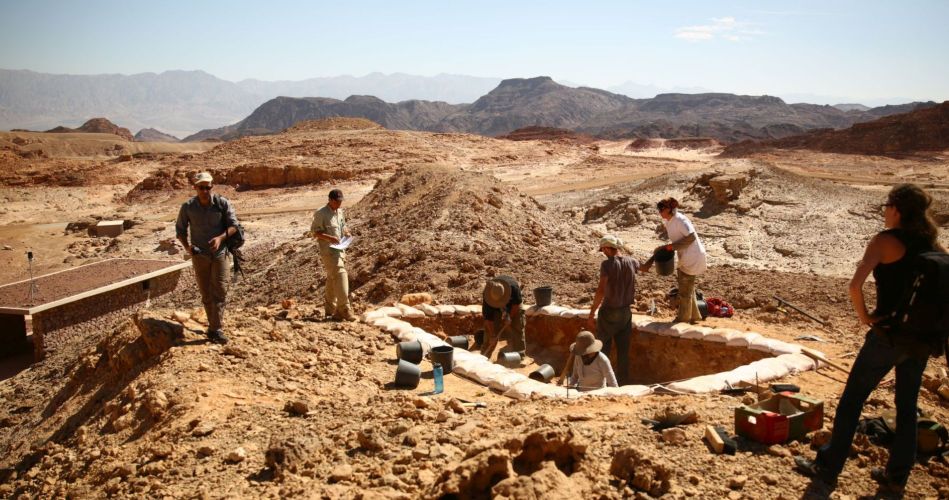By Aryeh Savir/TPS • 19 September, 2019
Israeli researchers from Tel Aviv University have uncovered evidence of the ancient Kingdom of Edom, giving credence to the Biblical narrative.
The Book of Genesis in chapter 36 describes an early, pre-10th century BCE Edomite kingdom in which “kings reigned in Edom before any Israelite king reigned.”
However, the wanting archaeological record led to conflicting interpretations of this text, until now.
The new study found that the kingdom of Edom thrived in the Arava Desert in southern Israel and in Jordan during the 12th-11th centuries BCE.
Prof. Erez Ben-Yosef of TAU’s Department of Archaeology and Ancient Near Eastern Cultures and Prof. Tom Levy of the University of California, San Diego, conducted an analysis of specimens found in copper production sites in the Arava which revealed the story of an affluent, flourishing society led by a copper “high-tech network.”
Copper, used in ancient times to produce tools and weapons, was the most valuable resource in the Ancient Near East. Copper production is a complex process, requiring different stages and levels of expertise.
Ben-Yosef’s team analyzed hundreds of findings from ancient copper mines in Jordan at Faynan and in Israel at Timna to reconstruct the evolution and refinement of the copper manufacturing industry over 500 years, spanning the beginning of the first millennium BCE, around 1300-800 BCE. They identified dramatic changes in the waste of copper extraction by melting discovered at the Arava sites.
Ben-Yosef noted that their results prove that the kingdom existed “in accordance with the biblical description.”
Ben-Yosef’s analyses of copper slag, the waste of copper extraction by smelting, showed a clear fall in the amount of copper in the slag over time, indicating that production had become expertly streamlined for efficiency.
The researchers attribute this sudden improvement in production to an Egyptian invasion of the Holy Land, the military campaign of Pharaoh Shoshenq I, the biblical “Shishak,” who sacked Jerusalem in the 10th century BCE.
The new research indicates that Egypt’s incursion in the land of Edom was not accompanied by destruction. Instead, it triggered a “technological leap” that included more efficient copper production.
“We demonstrated a sudden standardization of the slag in the second half of the 10th century BCE, from the Faynan sites in Jordan to the Timna sites in Israel, an extensive area of some 2,000 square kilometers, which occurred just as the Egyptians entered the region,” said. Ben-Yosef. “The efficiency of the copper industry in the region was increasing. The Edomites developed precise working protocols that allowed them to produce a very large amount of copper with minimum energy.”
Egypt at the time was a weak power, according to Ben-Yosef. While its influence in the region is apparent, it probably did not command the copper industry, which remained a local Edomite enterprise.
“As a consumer of imported copper, Egypt had a vested interest in streamlining the industry. It seems that, through their long-distance ties, they were a catalyst for technological innovations across the region. For example, the camel first appeared in the region immediately after the arrival of Shoshenq I,” Ben-Yosef noted.
“Our new findings contradict the view of many archaeologists that the Arava was populated by a loose alliance of tribes, and they’re consistent with the biblical story that there was an Edomite kingdom here,” Ben-Yosef underscored.
“A flourishing copper industry in the Arava can only be attributed to a centralized and hierarchical polity, and this might fit the biblical description of the Edomite kingdom,” he concluded.
